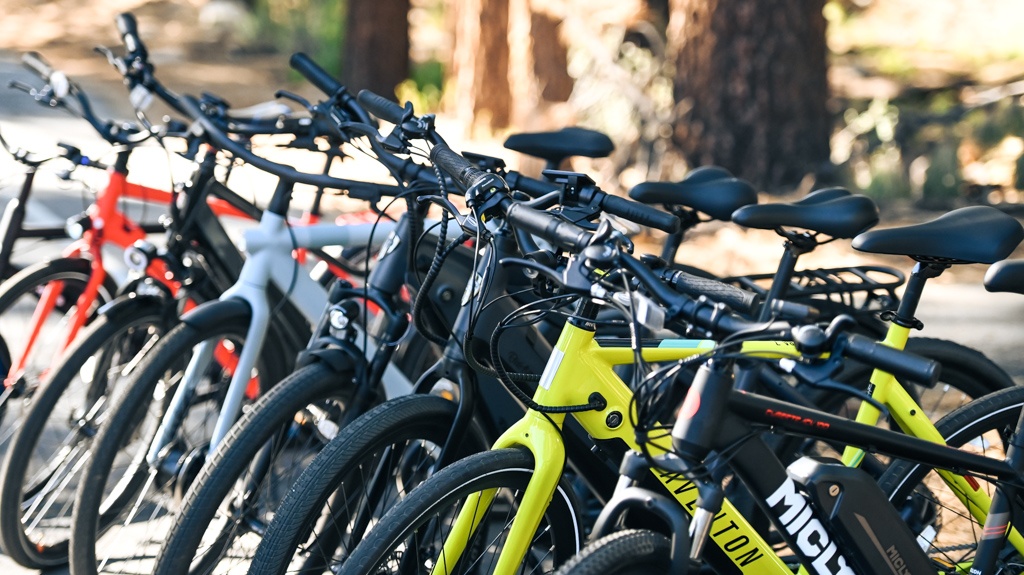Putting too much weight on an e-bike can lead to decreased performance and potential damage to the bike’s components. Excessive weight can strain the motor, reducing its efficiency and overall power output.
Additionally, the extra weight may put stress on the frame, wheels, and suspension systems, leading to potential mechanical failures. In order to maintain optimal performance and ensure a safe ride, it is important to stay within the weight limits specified by the manufacturer.
By doing so, riders can enjoy the benefits of an e-bike without compromising its performance or risking damage.

Credit: www.outdoorgearlab.com
Consequences Of Overloading An E-bike
When it comes to riding an e-bike, it’s important to understand that there are limits to the amount of weight it can safely carry. Overloading an e-bike can have serious consequences, compromising both your safety and the performance of the bike itself. In this article, we will explore the various risks and issues that arise when you put too much weight on an e-bike.
Safety Risks
One of the primary concerns when overloading an e-bike is the increased safety risks it poses. An e-bike’s braking distance and maneuverability are designed for specific weight capacities. When the weight exceeds these limits, it can significantly affect the ability to control and stop the bike, especially in emergency situations.
The additional weight can also affect your balance and stability, making it harder to handle the e-bike. This can lead to increased chances of accidents, falls, and injuries. It is crucial to prioritize your safety and never exceed the weight capacity specified by the manufacturer.
Impaired Performance And Handling
Putting too much weight on an e-bike can result in impaired performance and handling. The motor of an e-bike is designed to provide assistance based on a specific weight range. When you exceed this range, the motor may struggle to deliver the required power, impacting the bike’s ability to climb hills or accelerate.
The handling of an e-bike can also be negatively affected when it’s overloaded. Overloading can make the bike feel less responsive, making it more challenging to navigate curves and corners. This not only compromises your comfort and overall riding experience, but it also increases the likelihood of accidents.
Mechanical Strain On Components
Exceeding the weight capacity of an e-bike puts excessive strain on its components, leading to increased wear and tear. The frame, wheels, suspension, and other moving parts have specific weight limits that should be respected. Overloading can cause premature damage or failure of these components, resulting in costly repairs or even rendering the e-bike unusable.
Here are some specific consequences of overloading an e-bike:
- Increased risk of brake failure due to excessive weight.
- Reduced battery life and shorter overall range.
- Higher likelihood of tire punctures or blowouts.
- Decreased stability and increased vibrations while riding.
- Potential damage to the motor or electrical system.
It is essential to remember that manufacturers specify weight limits for a reason – to ensure the optimal performance, safety, and longevity of an e-bike. Exceeding these limits not only puts your safety at risk but also compromises the bike’s overall functionality and durability.
1. Safety Risks
When it comes to riding an e-bike, it’s important to understand the potential safety risks of overloading. Putting too much weight on an e-bike can lead to a range of issues that can compromise your safety and the performance of the bike itself. In this article, we will explore the various safety risks associated with excess weight on an e-bike.
Loss Of Control
Exceeding the recommended weight limit on an e-bike can result in a loss of control. As the weight increases, it becomes more challenging to navigate corners, make sudden turns, or maneuver the bike effectively. The excess weight can throw off the balance of the bike, making it unstable and increasing the risk of accidents or falls. It is crucial to adhere to the weight limits specified by the manufacturer to maintain optimal control over your e-bike.
Increased Braking Distance
When you put too much weight on an e-bike, it significantly affects its braking performance. The additional weight places additional strain on the brakes, resulting in increased braking distance. This means it will take longer for the bike to come to a complete stop, potentially leading to collisions or other accidents that could have been avoided under normal circumstances. It’s vital to consider this factor, especially when riding in traffic or congested areas, where sudden stops might be necessary.
Table: Examples Of Safety Risks From Overloading An E-bike
| Safety Risk | Explanation |
|---|---|
| Decreased Stability | The extra weight can make the bike less stable, making it more challenging to control. |
| Poor Handling | Excess weight can affect the bike’s maneuverability, making it harder to navigate obstacles or make sharp turns. |
| Tire Damage | The excessive load puts more stress on the tires, increasing the likelihood of punctures or blowouts. |
| Motor Strain | Overloading the e-bike can overwork the motor, potentially reducing its lifespan or causing malfunctions. |
Putting too much weight on an e-bike brings forth various safety risks that should not be ignored. From loss of control to increased braking distance, understanding these risks is essential to ensure a safe and enjoyable riding experience. Always remember to comply with the weight limits outlined by the manufacturer and maintain optimal control over your e-bike.
2. Impaired Performance And Handling
Exceeding the weight limit on an e-bike can lead to impaired performance and handling. The bike may become difficult to control, affecting its speed, stability, and maneuverability. Riding with too much weight can compromise safety and increase the risk of accidents.
Slower Acceleration
Putting too much weight on an e-bike can have a significant impact on its acceleration. With an increased load, the motor has to work harder to propel the bike forward, resulting in slower acceleration. This means that you may not be able to reach your desired speed as quickly as you would with a lighter load. So, if you find yourself frequently riding with excess weight on your e-bike, don’t expect to zip around with the same speed and agility as before.
Unstable Cornering
Another consequence of overloading your e-bike is compromised stability when cornering. With excessive weight, the bike’s center of gravity is shifted, making it harder to maintain control while turning. This can be especially problematic at higher speeds or when navigating sharp corners. The e-bike may feel wobbly or unsteady, increasing the risk of accidents. It’s important to note that maintaining proper balance and control is crucial for a safe riding experience.
3. Mechanical Strain On Components
When it comes to e-bikes, it’s important to understand that putting too much weight on them can lead to several mechanical strains on their components. These strains can affect the performance and lifespan of the bike, making it crucial to be mindful of the load you carry.
Excessive Wear On Tires
One of the first components to bear the brunt of excess weight is the bike’s tires. When overloaded, the tires are subjected to increased pressure and friction against the road surface. This can lead to excessive wear and tear, causing them to lose traction and grip, which ultimately compromises your safety. Moreover, overloading the bike can also result in frequent flat tires, adding unnecessary hassle and expense to your cycling experience.
Damage To Frame And Forks
The frame and forks of an e-bike are crucial for providing support and stability. However, when too much weight is placed on the bike, these components face undue stress. Excessive weight can cause the frame to bend or crack, leading to potential structural integrity issues. Furthermore, the fork, which connects the front wheel to the rest of the bike, can suffer damage such as bending or misalignment, negatively impacting the bike’s handling and maneuverability.
Implications For Electric Components
In addition to the mechanical strain on tires, frames, and forks, overloading an e-bike can also have implications for its electric components. The increased weight puts additional stress on the motor and battery, potentially leading to overheating and reduced efficiency. Over time, this strain can significantly shorten the lifespan of the motor and battery, resulting in costly repairs or replacements.
it is vital to be mindful of the weight you put on your e-bike. Overloading can cause excessive wear on tires, damage to the frame and forks, and put strain on the electric components. By keeping the load within the recommended limits, you can ensure optimal performance and extend the lifespan of your e-bike.
Frequently Asked Questions For What Happens If You Put Too Much Weight On E-bike?
What Happens If You Exceed Weight Limit On Electric Bike?
Exceeding the weight limit on an electric bike can have negative consequences. It may strain the motor and battery, reducing their efficiency and lifespan. Handling and maneuverability may also be affected, compromising your safety and control. It is important to adhere to the weight limit specified by the manufacturer to ensure optimal performance and longevity of your electric bike.
Can You Be Too Heavy For An Ebike?
Yes, you can be too heavy for an e-bike. Each bike has a weight limit specified by the manufacturer. Exceeding this limit may affect the bike’s performance and could potentially lead to damage. It’s important to check the weight limit before purchasing an e-bike to ensure it can accommodate your weight.
Are Electric Bikes Too Heavy For Bike Rack?
No, electric bikes are not too heavy for bike racks. Most bike racks are designed to support the weight of electric bikes.
How Much Does Rider Weight Affect Ebike Range?
The weight of the rider significantly affects the range of an e-bike. Heavier riders require more power to propel the bike, reducing the overall distance it can travel on a single charge. The optimal range can vary based on rider weight, terrain, and other factors.
Conclusion
Placing excessive weight on an e-bike can lead to various consequences. It can strain the motor and battery, causing decreased performance and range. Overloading the frame can result in structural damage and compromised safety. It is essential to adhere to the manufacturer’s weight recommendations to ensure a smooth and safe riding experience.
Prioritize your safety and the longevity of your e-bike by not exceeding its weight limits. Remember, a well-maintained e-bike is a happy and reliable ride.



